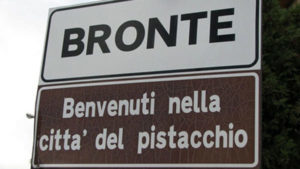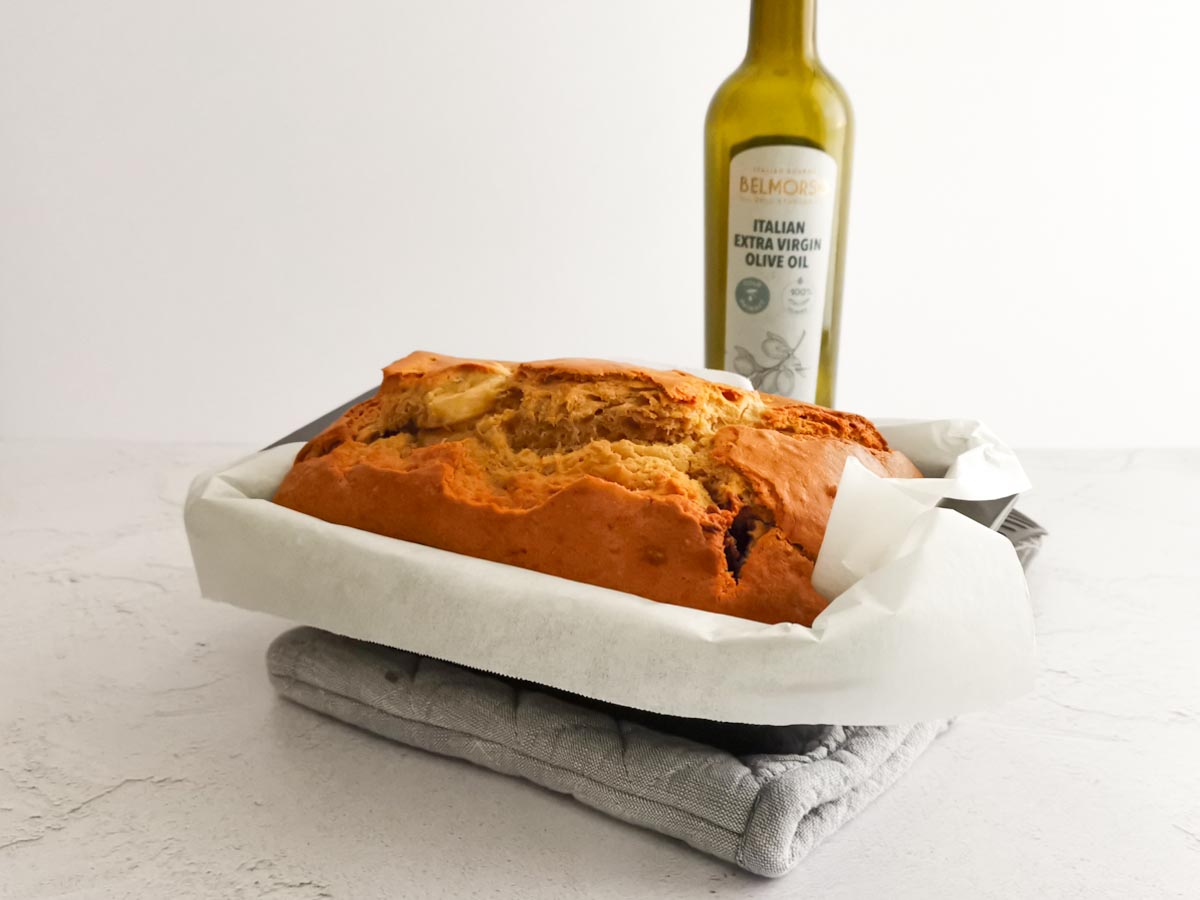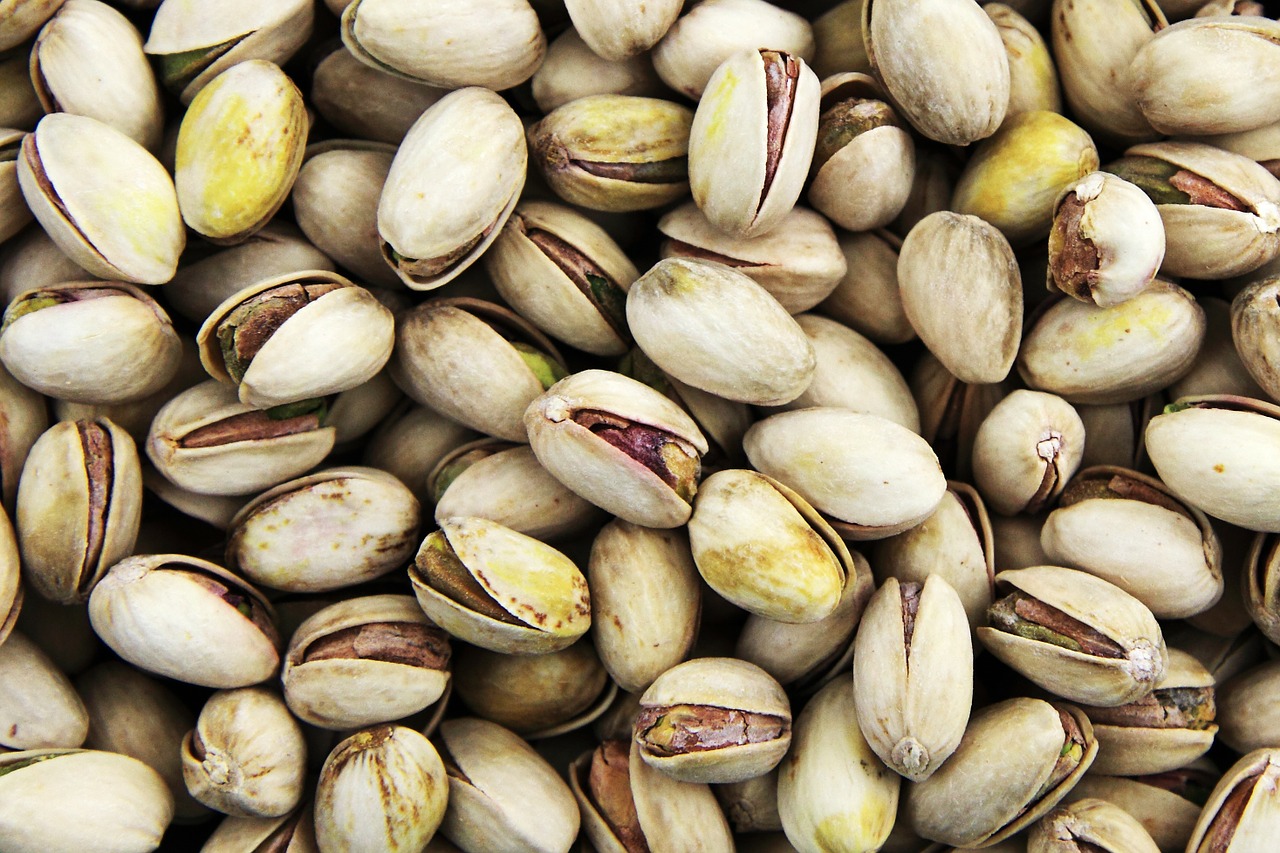
The Dinette Teller – 47. Bronte’s Pistachio: The Second Italian Green Gold
Even though the most famous Green Gold of Italy is represented by the Olive and the Extra virgin Olive Oil, Italy keeps in itself another greenish delicious secret: the Pistachio nuts!
History and Origins
Even though the Pistachio originated in the Eastern Countries, especially in Persia, Syria and India, it reached the Italian coasts in the 30 a.C. thanks to the Governor Lucio Vitellio back from an expedition in Syria.
Firstly, they tried to harvest the Pistachios in Liguria, Campania and Sicily. Only in Bronte, in Sicily, pistachios could grow well, thanks to the arid climate and the soil rich in volcanic ashes, coming from the Volcano Etna.

During the Eleventh Century, historic doctors as Avicenna began to consider the pistachios as a fundamental ingredient for the meals of the infirms and the elderly.
Nowadays, it is a symbol of the culture of the South of Italy, which represents the 7th world producer Country, producing around 2500 tons of Pistachios per year.

The Pistachio of Bronte and Adrano got the PDO (Protected Designation of Origin) recognition, which means that the entire product must be traditionally and entirely manufactured (prepared, processed and produced) within the specific region and thus acquire unique properties, quality or properties that are significantly determined by the geographical environment, including natural and human factors.
Harvesting
Pistachio trees thrive in climates with hot summers and relatively cool winters. Although we think of pistachios as nuts, the delicious, nutritious treats are actually seeds. Pistachios belong to the Anacardiaceae plant family. Pistachios develop in early summer and ripen between the late August and October.
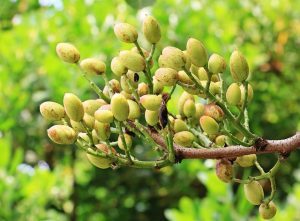
Production is alternate-bearing or biennial-bearing, meaning the harvest is heavier in alternate years. Peak production is reached around 20 years. Trees are usually pruned to size to make the harvest easier. After hulling and drying, pistachios are sorted according to open-mouth and closed-mouth shells. Sun-drying has been found to be the best method of drying then they are roasted or processed by special machines to produce pistachio kernels.
Properties
Pistachios contain the 3,9% of water, the 20% of proteins and carbs, for the 3% of ashes, for the 10% of fibres and sugars, and for the 1,5% of starch.
The minerals inside are Calcium, Phosphorus, Iron, Zinc, Magnesium, Manganese, Selenium, Fluorine, and Copper.
It is also rich in vitamins (A, B1, B2, B3, B5, B6, C, E and K) and amino acids.
Thanks to its chemical composition, the pistachios are renowned to be useful in a wide variety of health problems and to be very nutritious!
However, one caution though, because they contain 562 calories per 100 grams!

To reduce the Cholesterol
As all the dried fruits and cashews, also pistachios are really helpful in decreasing the total cholesterol, which could lead to dangerous problems, such as atherosclerosis, cardiovascular diseases, and diabetes.Tha majority of the fat, contained in the pistachios. are monounsaturated and for this reason, they can reduce the “bad” cholesterol (LDL) and increase the “good” one (HDL). Also, the high amount of fibre boosts this good aspect. Moreover, the antioxidants and phytosterols benefit the heart.
Safeguard the Eyes
Antioxidants such as lutein and zeaxanthin safeguard the health of our eyes, mainly in the elderly.

Dry Skin
The pistachios contain also a part of saturated fats, which are good for the dry skin.
Anaemia
Copper and Iron fight the anaemia, and the Copper further helps the absorption of Iron in the bowel.
Free Radicals
Vitamin A, Iron and phosphorus are useful as a restorative of the nervous system. Also, Isoflavonoids and organic acids hinder the actions of the free radicals, which could determine premature ageing.
Antibacterials
Polyphenols have antioxidants and antibacterial functions, hindering inflammation, infections, and fungus.
Hypertension
Pistachios are often processed adding salt, but actually, they don’t contain Sodium on their own. For this reason, they can be consumed with no problem by persons who suffer from hypertension.
Natural Aphrodisiac
It is inferred that Pistachios have an aphrodisiac power. It is said that in ancient Persia, lovers used to meet under the Pistachios trees under the moonlight.

Pistachios and Sicily
Pistachios are a great ingredient for cakes, dessert, ice creams and granita.
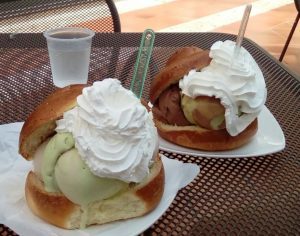
Pistachio is also used to season cold meat, such as mortadella and salami.
In Bronte, you can also find the famous Pistachios Pesto, so delicious, thick and velvety.

For Christmas, you can find the typical “panitti“. A dough made with almonds, pistachios, dried figs, and honey.
Every year, there is a fair between the end of September and October that celebrates Bronte as the city of pistachio!

